Hi everyone! I’ve been toying with the idea of writing a monthly newsletter for a while now, and in the spirit of doing at least one Scary Thing a month, launching this newsletter will be an August Scary Thing. The format may change, but for now, it will include the work I’ve created/had published in the past month, visual and auditory inspiration, and some longer-form musings. “Maybe an interview with a fellow artist. Or we interview you,” my friend Culver suggested over dinner on Monday. Love! Feedback and ideas are appreciated! Thanks for being here! And away we go.
ART
I was tasked with illustrating the cover of a report titled, “Establishing Vigilant Care: Data Infrastructures and the Black Birthing Experience,” written by Joan Mukogosi, a research analyst at Data & Society. The report highlights the importance, ubiquity, and risks of digital health technology systems to Black birthing people and the subsequent actions by maternity care professionals to protect their clients. The D&S team wanted the illustration to positively focus on the medical professionals and data recording methods. Hence the bright color scheme and each character optimistically at work. I really like the difference in scale between the figures and the objects. The cornflowers and orchids, both symbols of fertility, contrast the straight lines of the technology. I did my best illegible doctor’s scrawl in the background.
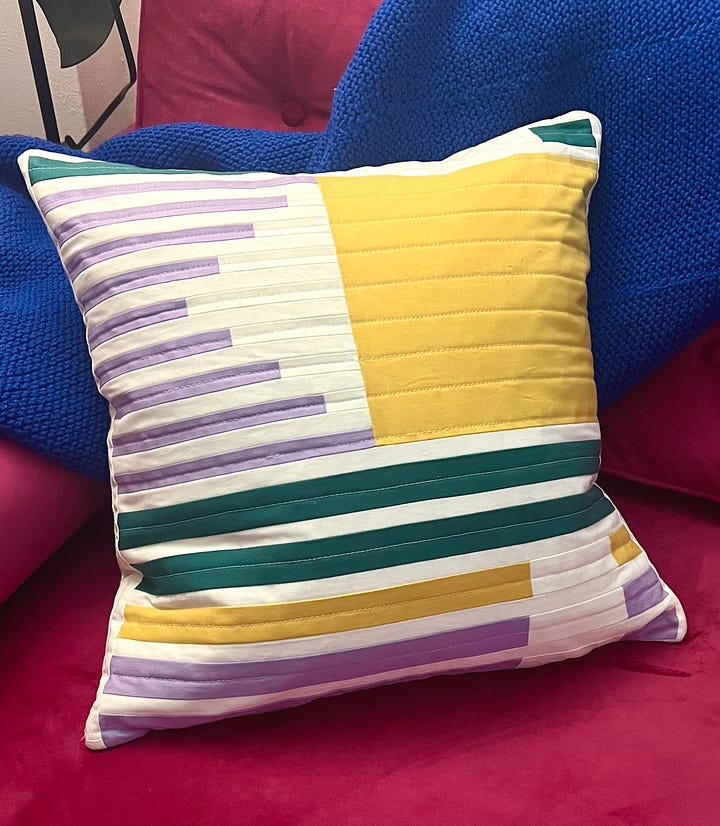
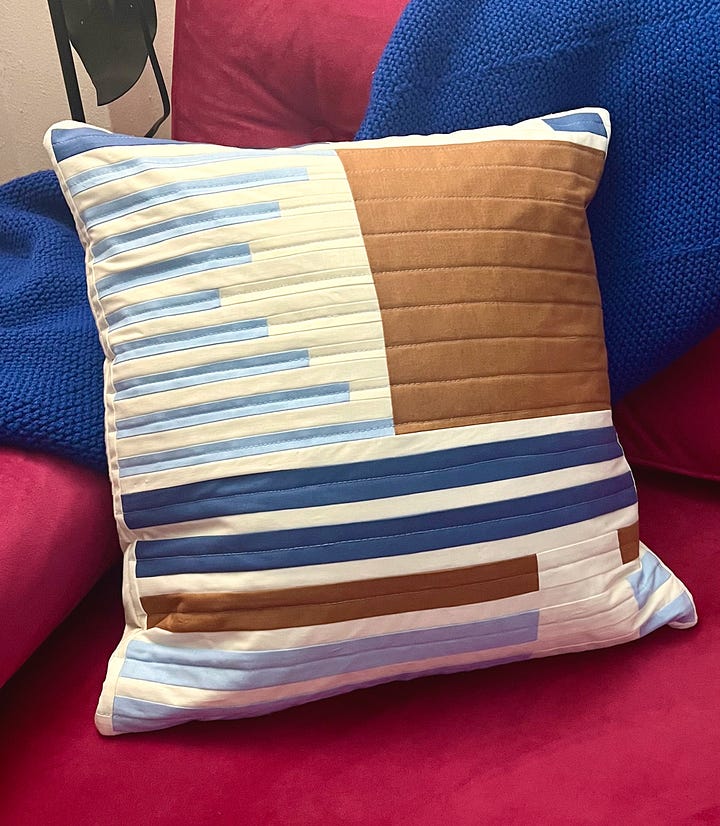
My sewing machine and I had been out of touch for the past few months, so I was having a serious sewing itch. When I finished up the D&S piece, I immediately took to my sketchbook to design a new pillow pattern. With a certain friend in mind and several yards of gifted neutral cottons, I designed what I’m calling the “Persephone Pillow.” An abstracted landscape, with the double green lines reminiscent of a grassy horizon line, a half-sheathed sun and a view into hell. (Was I also listening to the Hadestown soundtrack while I was cutting the fabric? Hell yes! Oh no, boo!) This was a reminder of how physical quilting can be: hunched over the cutting board, sweating above the hot iron, pushing unwieldy fabric layers through the sewing machine. Quilting is not a summer activity.
Oh, “Empire Line.” There is a lot of fear in explaining this very personal piece. Dana Margolin, the lead singer of one of my favorite bands, Porridge Radio, nailed it when she wrote in her newsletter a few weeks ago, “there’s something in my fear of being exposed about retaining dignity, worrying about being too much.” Where is the line between professional and personal, public confessional and private journal, and can I toe it while keeping my pride?
I’m preparing to send out some work to record labels and wanted some ~looser~, more experimental pieces in my portfolio (an aside plug: if you know any musicians looking for album artwork or poster/merch design, please pass along my portfolio). This illustration is a series of pictographs for the first verse and part of the chorus of “Empire Line” by The National, the song I listened to on repeat for days before and after a recent breakup. While working on this piece, I felt like I had regressed in my healing because I was thinking about him so much, revisiting golden moments and hard conversations, but really, I was finally letting myself feel the grief I had been keeping at bay for weeks with hopes of reunification. “Empire Line” ended up being a huge energy release. It was both an anchor of reflection and one last chance, a love letter and a breakup letter. Processing through art, baby.
Chairteenth! The last piece I made this month was for The Washington Post, for an article titled “How the Montgomery Riverfront brawl sparked an unofficial holiday,” written by Janay Kingsberry. The article is about how people across the country turned the brawl into an unofficial holiday and what their celebrations look like. The art director requested many elements: the Harriott II boat, merch tables, people carrying folding chairs and in chair-themed t-shirts, swim lessons, general merriment! It was so much fun to develop this little world, populating it with tiny details and inventing little personality quirks for the characters. My favorite details are the relish bottle, the little girl’s stripey straw, and everyone’s shoes. Ownership and consumerism are themes that repeat throughout my work. Sure, I can’t afford this gorgeous $100,000 Jérôme Bugara sofa, but my characters can. They are bedecked in clothes outside of my price range, goods I’m considering purchasing, and trends I refuse to engage with. One figure wears red cowboy boots, another styles her hair with a bandana (I wore my hair like that for all of 1st grade; the PTSD is too strong to reengage with this style). This piece has a ton of positivity and humor in it like the silly ridiculousness of BYOWFC (bring your own white folding chair). Shout out to my family friend, Joel, for snagging three physical copies! The thrill of seeing my work in print never lessens.
INSPIRATION
“Fairy tale art”. Wendy Anderson Halperin’s illustrations. Pearls, pastels, starry skies, luscious textures, glowing lights, ribbons and bows, mythological imagery. They’re just so soothing and otherworldly, a balm to my brain.
MUSIC
Albums I’ve been loving:
Every Bad — Porridge Radio
For Your Consideration — Empress Of
Strange Disciple — Nation of Language
We Will Never Run Out of Love! — Terror Pigeon
Sleep Well Beast — The National
MUSINGS
I’ve been romanticizing the act of Losing Your Shit again. Specifically, of letting emotions rule, of not caring about consequences or loss of dignity, of breaking free from rigid constraints, tearing out roots, sending risky texts, throwing a vase at the wall. Idols include lonely, depressed Sasha Jansen and self-destructive femme fatale Effy Stonem, the “mad wives of the modernists” Zelda Fitzgerald and Vivien Eliot (Kate Zambreno, thank you), and Lana Del Rey’s wild and free 2012 All American Girl.
Sasha Jansen aimlessly wanders through Paris in Jean Rhys’s 1939 novel, Good Morning, Midnight, her days a blend of sorrow, drink, and memory. On a superficial level, there is something so romantic about traipsing through an old European city, unable to do anything but walk and grieve, walk and grieve. But because Sasha’s sadness rules her, she can’t hold down a job, a friendship, a house. Her day is defined by her next drink, of that which will quiet thought, soften the edges of her demons. Sasha is “empty of everything, but the thin frail ghosts in her room.” Not so romantic anymore.
Effy Stonem, from the television show Skins (the UK version, of course) and expertly played by Kaya Scodelario, is another self-declared empty vessel: “I have nothing. I say nothing. I am nothing.” She is a moody, angsty party girl teen whose depression is pathological. She’s beautiful though, and is there anything more sad than a beautiful girl without a will to live? Other characters read her as a sexy mystery wanting to be saved. But it’s not a mystery why Effy acts the way she does, constantly putting herself in dangerous positions and hurting people who love her. She simply doesn’t give a fuck because she doesn’t want to live.
Is it Sasha and Effy’s commitment to sadness I’m envious of? It’s certainly not their detachment from life or soul-sucking depression. Maybe it’s Sasha’s lack of responsibilities, Effy’s ability to live entirely in the moment. I used to wander the streets of Manhattan and Brooklyn. I would walk for hours and my favorite time to go was at dusk because you could look into people’s warmly lit apartments. If I was lucky, I’d catch a snippet of a domestic scene: dinner being served, people laughing, a person reading. Looking back, I was a little lonely on these walks, but I would finish them feeling so refreshed and inspired, calm and centered. My walks were different than Sasha’s walks, because I had a life and loved ones to return to. Sure, I had some sorrows, some loneliness, but they did not define me. My rigid marathon training schedule doesn’t allow for walks, but if that’s why I’m envious of Sasha, I should just go for a walk.
Zelda Fitzgerald is a perfect tragedy, a girl turned into a muse turned into a thorn turned into a flame. She is so full of vitality and intelligence, dreams and ideas. With this exuberance, she captivates F. Scott. He attempts to capture her and flatten her into a muse, dictating her diction, clipping her wings. He learns though that you can’t force a human woman into the written word: a wild woman has weight. All Zelda’s desires he first fell in love with: to write, to dance, to live, become grievances. With her exuberance, she annoys F. Scott. Because this was in the 1920s, he is able to stop her attempts at writing, at dancing, at living. When she rebels rightly against this control, he has her institutionalized. There is a fire and she dies in a blaze. Of glory? No. Of ignored cries, dashed hopes, unfulfilled ideas. So much promise turned to ash.
Vivien Eliot is another woman full of words, captured by a man first enraptured, then inspired, then disgusted. Once T.S. has sucked her dry of her youth and use, once her gaiety and flights of nonconforming fancy grow embarrassing, he abandons her. Vivien, a little bit insane at this point, can’t break free from her love. She is total loss of pride, but full of hope. “She left the front door open for a half hour every evening,” so he could still enter as if he’d lost his key. She “sent out Christmas cards signed by Mr. and Mrs. T.S. Eliot.” “She put up the good fight. An advert she tried to place in The Times once he had left her, address unknown: ‘Will T.S. Eliot please return to his home, 68 Clarence Gate Gardens, which he abandoned Sept. 17th, 1932.’” (All quotes from Heroines by Kate Zambreno, a brilliant read and for which this essay would not exist without). Somewhat predictably, Viv is institutionalized several years later, and that is where she dies, still legally married to T.S., though he never visited her there. In a last final blow, T.S.’s second wife claimed copyright of Viv’s writings and private diaries, essentially silencing her voice forever.
Sasha and Effy are empty, whereas Zelda and Viv are temples to emotion. They kick, they scream, they throw the vases. Zelda hurls herself down a flight of stairs. (Diana does this too.) Viv sends the text (“Will T.S. Eliot please return to his home”). They feel so deeply that they lose their survival instincts. This is why I’m envious of Zelda and Viv: their throwing of the vase. I want to throw the vase.
Of course, Zelda and Viv (and Diana too) scream because they are silenced and ignored, belittled and misunderstood. Anger implies unfairness and it’s so unfair to be vilified for something you were once celebrated for. So unfair to not be allowed to pursue your interests, and then be abandoned by those who tried to control you. So unfair to be institutionalized by men who stole your life force, who made you throw the vase because they just wouldn’t fucking LISTEN.
If you see where this essay is going, please humor me for one last exploration. I am embarrassed to say that it took me several days of sitting with these disparate thoughts for me to get there.
And then there’s Lana. The Lana of Born to Die and Paradise albums, both 2012, but really the Lana in her music video, “Ride”. Pure perfect poetry, I thought as a teenager, of the monologue that bookends the video. If anyone could make losing yourself in the desert, selling your body to sweaty motorcycle men for safety, and being a failed singer look so appealing, it’s Lana.
And yes, she looks free. She screams in animalistic passion, she shoots a gun freely into the air, she rides on the back of motorcycles with her hair streaming behind her. The video ends with her asking a question: “Are you in touch with all of your darkest fantasies?/ Have you created a life for yourself where you can experience them?/ I have/ I am fucking crazy/ But I am free.”
She, of all my wild women, seems to be the happiest. This is what I want: to be fucking crazy, to feel every emotion, to play with them, to make art about them. That’s what freedom is. Freedom to feel, freedom to be. Stop caring about what others think and just be.
Why, you might be asking, am I so enraptured with these women who defied their bounds and binds? Who wandered, who didn’t care, who fought, who screamed, who lived? I didn’t ask myself this until yesterday. While journaling on the subway, I allowed myself to fantasize a little. If I didn’t care of consequence or dignity or reputation, what would I do? I’d send the text. And what would that text say? What began as a slow trickle of words quickly became a torrent.
“Oh shit,” I whispered aloud, coming up for air. Turns out I was holding onto a lot more anger and frustration than I had initially thought.
I spent around three-quarters of my life trying to suppress my emotions. To be Sasha and Effy, to achieve emptiness. The problem is, emotions don’t work like that. They don’t go away. They build and bubble and spark, until they’re pouring out of you in a noxious, hot sludge. I’ve spent the remaining quarter of my life dealing the ramifications of this suppression and learning how to sit with emotions. I hadn’t wanted to be angry at someone who I was so grateful for. I didn’t think it possible to hold love, gratitude, and understanding of the situation in the same hand as frustration and anger. But there I was on the subway, writing out my dark fantasy of losing control and sending the text, holding everything. Here I am now, in a café, turning my excited scrawl into .docx text, still holding everything. I can love him, know he made the right choice, and be angry at him, all at the same time.
Is it crazy to be this vulnerable on the Internet? Is this my version of the wild woman? Zelda, Viv, and Lana all wrote. They wrote to express, creating characters who could say what they couldn’t. They wrote to stay alive, to make sense of the pain. I do feel freer, more at peace now. I have anger, but it will pass. All emotions do, but only after you greet them at the door, call them by name, welcome them in. “Come in,” you say, “It might be uncomfortable, but let’s sit together for a bit.” You have to entertain them to move forward.
I don’t want to throw the vase anymore. I can’t anyway. The baby is sleeping.
From the bottom of my heart, thank you for reading! My heart is racing and I feel like a wild woman. I hope you’ll stick around. See you next month; all my love! xx

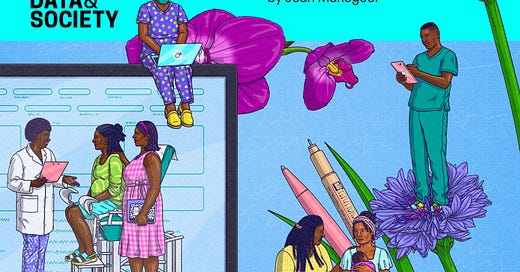



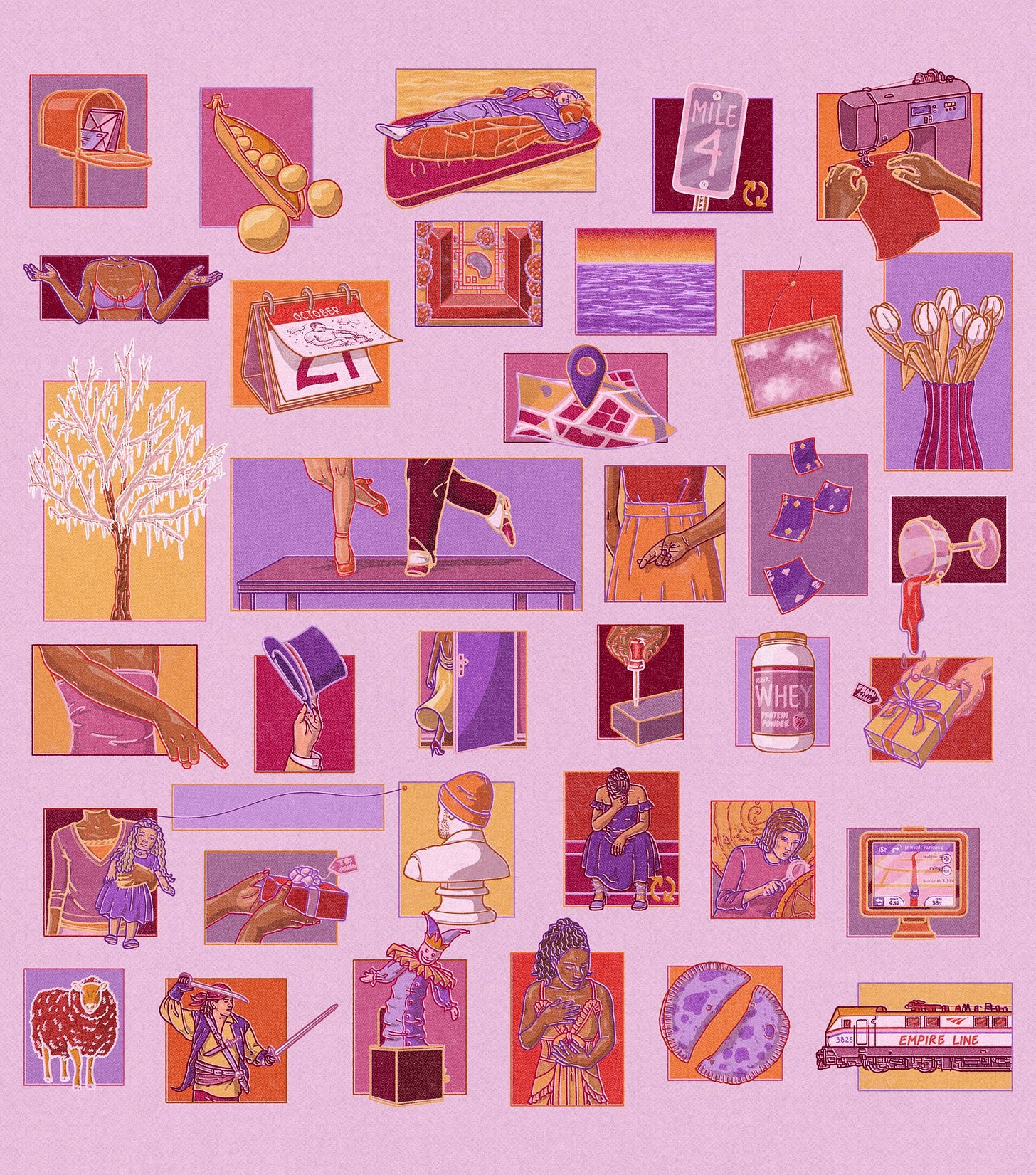

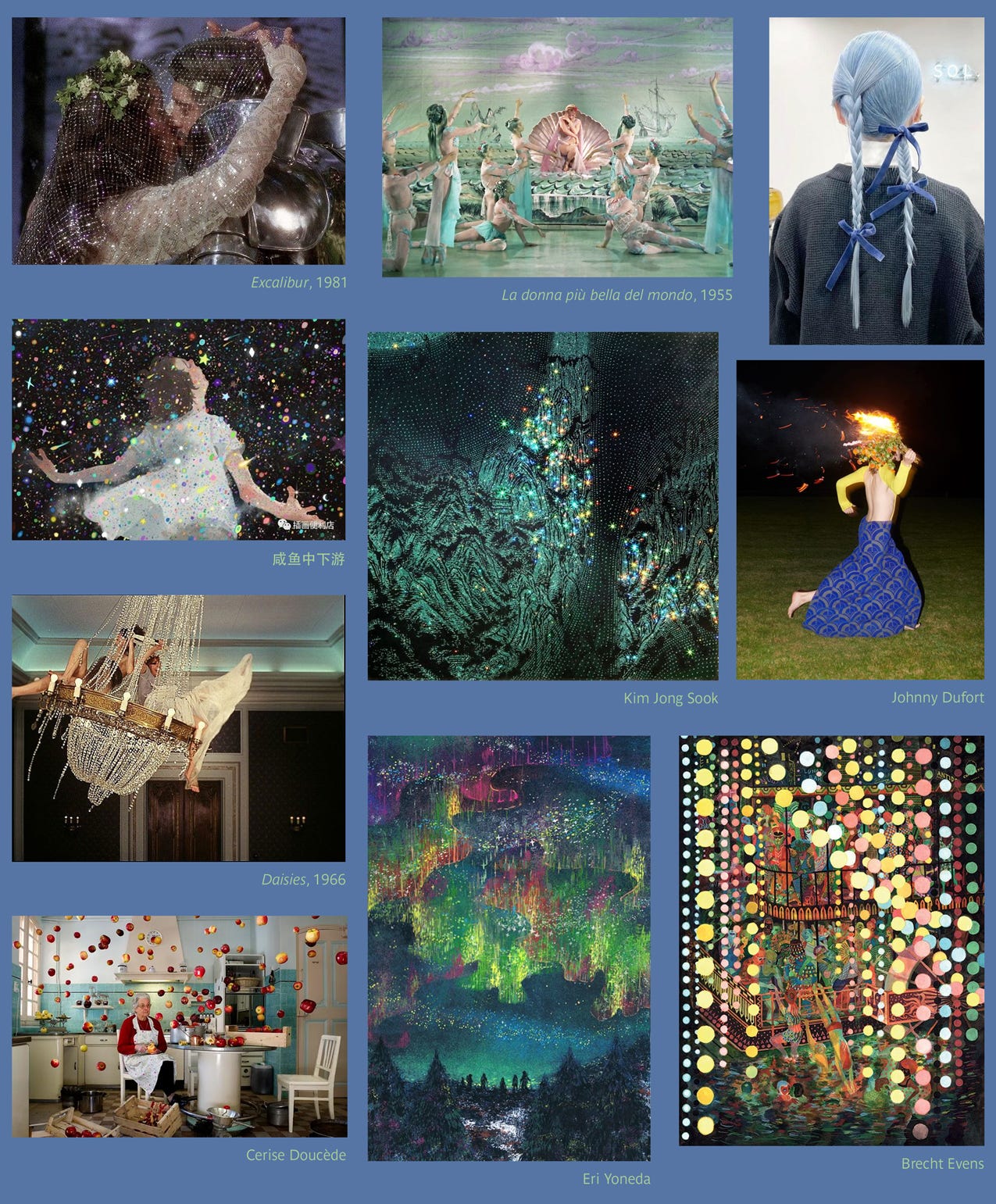
YAYAYAYAYAYAYAYAYAYAAAAAAA
👏👏👏👏👏👏👏👏👏👏👏👏
YES ELLY 🔥